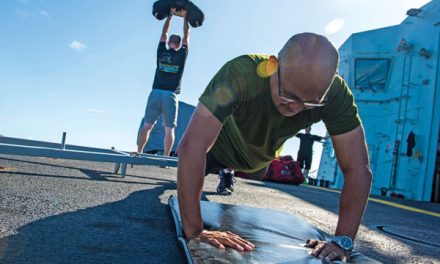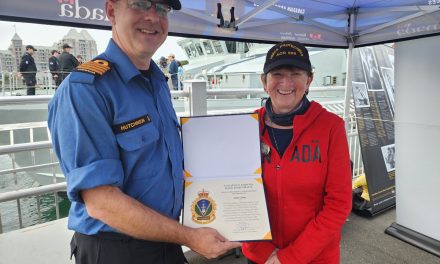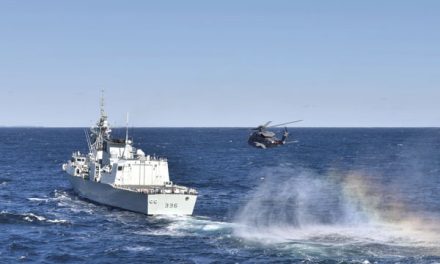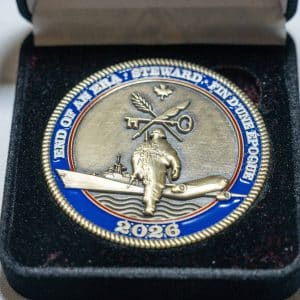
Twenty-nine sailors from HMCS St. John’s recently had the opportunity to visit the BAE Systems Shipyard in the United Kingdom.
Sub-Lieutenant Vincent Massé, HMCS St. John’s ~
Twenty-nine sailors from HMCS St. John’s recently had the opportunity to see the future fleet when they visited the BAE Systems Shipyard in the United Kingdom (UK).
The facility houses the construction of the UK’s Type 26 frigate, which is the winning design for the Canadian Surface Combatant. Up to 15 new Canadian Surface Combatant vessels will be built for the Royal Canadian Navy (RCN).
There are a few differences between the UK’s Type 26 and the future Canadian warship, such as accommodation spaces, combat systems, and a hangar to accommodate the CH-148 Cyclone, Canada’s main ship-borne maritime helicopter, providing air support to the RCN.
There are many commonalities as well such as a gym, unlike current Canadian warships that have retrofitted gyms from existing spaces.
3D view
The future warship was made even more real through a computerized 3D demonstration where the sailors could see the various decks, spaces, and compartments.
The ship will have two main passageways, one on each side, with interconnecting passageways in-between. The messes will open into the cross passages. The passageways will not be directly up against the side of the hull, as an engineering void will be reserved for the cabling, piping and equipment on the ship. The enclosed forecastle, where the cable party and part-ship hands will be protected from the weather, will be most welcome.
At first glance the galley seems much larger than on the Halifax-class frigate.
On the quarterdeck, there will be port and starboard capstans to help personnel handling the lines, rather than just a center line one present on Halifax-class frigates.
Lastly, the bridge wings will wrap around the bridge providing easy access to the outside of all the windows.
One of the most innovative features of the ship is the new mission bay. The mission bay is a large area located forward of the hangar, spanning the width of the ship. With a crane located on the deckhead that slides on rails from port to starboard. This space will likely prove to flexible and adaptive to mission roles the RCN is likely to have in the future. It will have enough space to house 10 shipping containers, four rigid inflatable boats, or any other configuration required.
Propelling the ship
In terms of propulsion, the ship will have a single gas turbine driving a cross-connect gearbox with two electric motors mounted on each shaft in a combined diesel-electric or gas configuration. At lower speeds, the diesel engines will provide the power to turn the electric motors. For faster sprints, the gas turbine will provide the required power.
Inside BAE Shipyard
St. John’s crew continued the tour with a visit of the Govan Shipyard. BAE Systems has established new construction methods for the Type 26 by working on the River-class Offshore Patrol Vessels for the Royal Navy. This is similar to Irving Shipbuilding’s model, which started construction of the Harry Dewolf Class in advance of the start of the Canadian Surface Combatant program.
At the shipyard, the first building hall contained the fabrication and forming shops where plates of steel are received and formed into useable building blocks for the ships. During the tour, workers were fabricating new components for the Type 26 project.
Following this, the crew proceeded to the second building that housed the construction of the forward and aft ends of the first Type 26 frigate, HMS Glasgow. Here, from scaffolding erected on its starboard side, they were given a bird’s eye view of the engine spaces and the rest of the aft end of the ship.
The visit concluded with the presentation of a ship’s plaque to the staff at BAE Systems. They told the crew it will be hung with pride in the shipyard’s new Canadian project office.
Most people don’t get a chance to see what the future has in store. But members of St. John’s did just that—and the future looks bright for the RCN.









